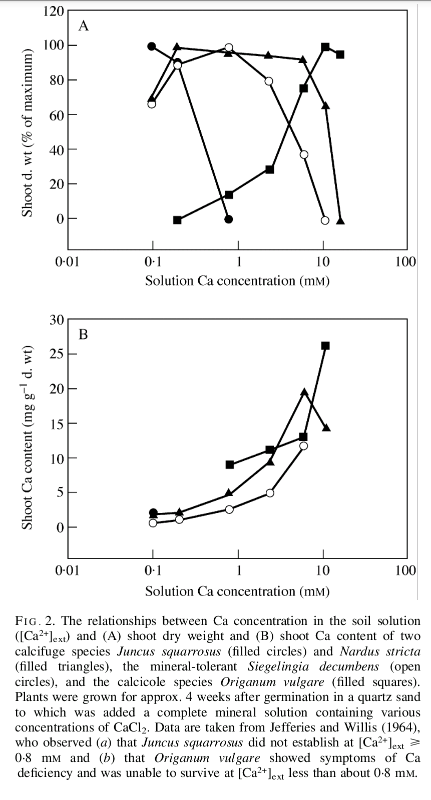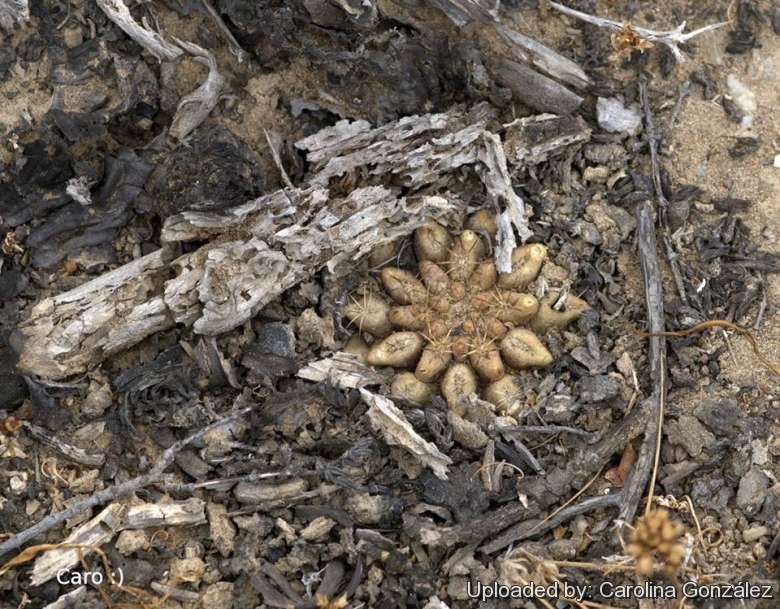Now, i have some time to write my long newbie's 2 cents
Did i say "long" and "newbie"?
So, read it on your own risks

First of all, i would like to thanks Dave for his ALWAYS informative explanation
It helps me a lot in learning about cacti
Secondly, i would like to state my position in this discusion
I'am the one who....
1) like to grow my mexican desert cacti in a mixture that mimic their habitat, which is calcareous in nature. Afterall, this is what Roger Brown says in the
The Cactus Family.

- Screenshot_2020-01-31-07-08-55-1.png (179.22 KiB) Viewed 3240 times
2) agree to use the acidified water for watering cacti as i have indicated in
this post
Having said that...here we go...
DaveW wrote: ↑Thu Jan 30, 2020 3:11 pm
The alternative explanation was one given by a Brazilian Botanist who said that cacti growing on alkaline rocks
only grew when acid rain fell and they stopped growing again once the rocks turned the water alkaline.
it is interessting that he said that, because that bring up a question in my mind.
Why do the cacti grow when the acid rain falls?
1) was it because it loves the acidity that the rain brings (ie. The rain turns the enviroment acid and the cacti loves it)?
2) or was it because the acid rain triggers something that the cacti loves?
In my imagination,
this post tells me that Steve might need to pour a good amount of acidified water to his pot of cactus. Let's say he pour a glass (200cc) of acidified water for a pot of (10x10x10)cm cubic.
According to
wiki, precipitation of Chihuahuan desert is only 235mm annualy for the area of 362.000km square
Well...compared to Steve's pot which is only (1x10^-10)km square...it would seem that his pot has soooooooo much "precipitation" from his 1 glass of acidified water...don't you agree?
So i dont think that the precipitation of mexican desert would push down it's calcareous PH from PH8 (let's say) to PH7 (ie. the Mexican desert environment become acidic and the cacti loves it and grow when the acidic rain fall)
Not to mention, pushing it further from PH7 to PH6 (which is 100 time harder to do)
Or, to push it from PH6 to PH5 (which is 1000 time harder to do - remember that this is a logarithmic scale)...this PH5 (or rather PH5.5) is the goal of Steve in his post
So...i have to hold on to my second question above...does the acid rain trigger something that the cacti love, thus it grows?
I found
this article, 2003, by
Prof White of Oxford Univ. You can download it
here.
I quote...
1) Ecologists have classified plant species into calcifuges, which occur on acid soils with low Ca, and calcicoles, which occur on calcareous soils.
2) Nevertheless, calcifuges generally grow well at low Ca2+ concentrations in the rhizosphere ([Ca2+]ext) and respond little to increased [Ca2+]ext, which may even inhibit growth (Fig. 2).
3) Conversely, the mechanisms that enable calcicole plants to maintain low [Ca2+]cyt in their natural habitat are believed to restrict their growth at low [Ca2+]ext by inducing Ca‐deficiency (Fig. 2; Lee, 1999).
Now, #1 is easy to understand
#2 wants to say that the calcium-hater might be stunted it's growth in the calcareous soil
#3 is somewhat "grey" to me...because i'am not a botanist (i have a bachelor degree in electrical engineering) and he uses astronaut words while i'am merely an elementary student
But let's see this graph (i'am good at reading graph

)

- Screenshot_2020-01-31-07-57-59-1.png (124.21 KiB) Viewed 3232 times
It is said in that upper graph that the Calcium-lover indeed have an increase dried weight (ie. It grows) in the mixture with higher calcium consentration. Calcium-lover here is represented by Origanum vulgare (filled square in the graph)
And the lower graph tells us that the shoot Ca celular consentration increases as the Ca mixture consentration is increased (ie. It really sucks that Ca2+ into it's cells for growing - it's dry weight increaces) and it collapses completely when the environmental Ca2+ consentration is lower than 0.8 milliMolar
Combined reading of both graphs would be, as the "blood" Ca2+ consentration increases (lower graph), the Calcium-lover gains a body weight, whereas the Calcium-hater plummet to their death (upper graph)
All in all,
both graphs tell us that the Calcium-lover needs the calcium from the habitat for it's growth
So in the light of this article and the fact that acid rain/water disolves calcium salt (ie. Limestone in the habitat) into Ca2+, ready to be uptaken by the roots, i return to your previous quote
DaveW wrote: ↑Thu Jan 30, 2020 3:11 pm
The alternative explanation was one given by a Brazilian Botanist who said that cacti growing on alkaline rocks
(1) only grew when acid rain fell and they stopped growing again
(2) once the rocks turned the water alkaline.
1)That cacti grow because of the environmental consentration of Ca2+ is augmented during the acid rain...thus it grows!
Not because the cacti love acidity, rather than alkalinity...in fact, it loves, it needs alkalinity as the graph shows us
2) If cacti had grown due to environmental acidity, mexican desert would have had to take much higher precipitation in order to do that (not just 235mm annually). There has never been a changing of PH in the mexican desert. It has always been alkaline despite the presence of acidic rain. The rocks turns that small amount of acidic rain into alkaline water in seconds by releasing tons of ions Ca2+ tout de suite. It is impossible that the cacti only grow during that 1 or 2 seconds...
Hey...
i read that article a few weeks ago

I dont pretend to have the explanation for someone else's experience
But i think what Elton and Malcolm had, was their acidified water melted down some of the bicarbonate salts, made it ready for the root to uptake, in the form of Ca2+
I agreed that bicarbonate salt can build-up around the root, forming some crust, thus choking the root
Their acidified water melts this crust and the cactus grows again
====================
Now, i did say that I agree of using acidified water for cacti
And in fact...i already bought some citric acid for the cause
But I'am reluctant to do it...

- rsz_20200131_090550.jpg (60.14 KiB) Viewed 3217 times
Because i think there are enough disolved ion Ca2+ in my tap water
I don't need to "melt" some from my limestone chips
Further more, as Dave has said, my osmocote has done it's job
And the saying of "dont fix what isnt broken" keeps circling in my mind...
Since my
L. principis is doing fine in the current treatment...i'am holding myself from using acidified water...
====================
DaveW wrote: ↑Thu Jan 30, 2020 3:11 pm
Also another thing I read was somebody as an experiment tried growing some Chilean cacti in both peat based soils and mineral ones. The ones in the peat based mixture produced far more top growth, but a more fibrous root system. However those in the mineral mixture a lot less top growth but a much better tuberous root system, just as in habitat. You can see why Dutch growers grow them in peat therefore since they get paid for top growth that can be seen, not roots unless they are selling carrots!
I have had
a bad experience with peat based mixture
Only after
i had cleaned that black sticky soil off the root, that the yellowing tip stoped spreading
My experience above is similar to the one from
this site
I quote
Ariocarpus hate peat and similarly based composts as a long term growing medium, particularly in maturity. Although they may seem to do well in it for a short time the ultimate result will be poor root structures, loss of roots and generally unhealthy looking plants - this is very obvious in A. trigonus as the tubercle tips yellow and die back.
I dont say that this site is corect though
I only say that my experience was similar to his and his solution (along with
Steve's) helped me
So, i would not dare to use any peat mixture anymore












